Vue d'ensemble Plaquettes en carbure monobloc
Si vous travaillez le métal ou l'usinage, vous avez probablement déjà rencontré des plaquettes en carbure monobloc. Ces outils minuscules mais puissants sont essentiels pour couper et façonner les métaux avec précision et efficacité. Mais qu'est-ce qui les rend si spéciaux ? Plongeons dans le monde des plaquettes en carbure monobloc, en explorant leurs types, leurs applications, leurs propriétés et tout ce qu'il y a entre les deux.
Les plaquettes en carbure monobloc sont réputées pour leur durabilité et leur capacité à résister à des températures élevées, ce qui les rend indispensables dans diverses applications industrielles. Elles sont fabriquées à partir d'un matériau composite comprenant de fines particules de carbure, généralement du tungstène, maintenues ensemble par un liant métallique, généralement du cobalt. Cette combinaison permet d'obtenir un outil incroyablement dur et résistant à l'usure.
Types de Plaquettes en carbure monobloc
Les plaquettes en carbure se présentent sous différentes formes et tailles, chacune étant adaptée à des tâches spécifiques. Voici un tableau détaillé pour vous aider à comprendre les différents types de plaquettes en carbure monobloc :
| Type d'insertion | Forme | Application | Caractéristiques |
|---|---|---|---|
| CNMG | Rhomboïde | Tournage général | Polyvalent, 4 tranchants |
| TNMG | Triangle | Tournage lourd | 6 arêtes de coupe, robustes |
| DNMG | Diamant | Tournage de précision | 4 arêtes de coupe, haute précision |
| VNMG | Forme en V | Finition soignée | 2 tranchants, idéal pour les finitions |
| SNMG | Carré | Dégrossissage | 8 arêtes de coupe, excellent pour le dégrossissage |
| WNMG | Trigon | Semi-finition | 6 arêtes de coupe, bon équilibre |
| CCMT | Carré | Tourner la lumière | Angle de coupe positif, faibles efforts de coupe |
| DCMT | Diamant | Tournage de copies | Haute précision, finition soignée |
| TCMT | Triangle | Finition légère | Angle de coupe positif, faibles efforts de coupe |
| SCMT | Carré | Usinage général | Robuste et polyvalent |
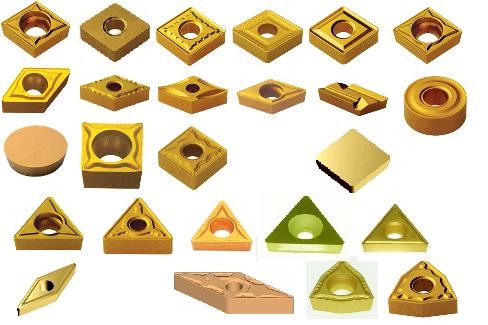
Applications des plaquettes en carbure monobloc
Les plaquettes en carbure monobloc sont utilisées dans diverses industries, de l'automobile à l'aérospatiale. Le tableau ci-dessous résume leurs applications :
| L'industrie | Application | Description |
|---|---|---|
| Automobile | Composants du moteur | Usinage de précision de pistons, d'engrenages |
| Aérospatiale | Aubes de turbine | Résistance aux hautes températures |
| Médical | Instruments chirurgicaux | Des coupes précises et nettes |
| Pétrole et gaz | Outils de forage | Durable et résistant à l'usure |
| Électronique | Fabrication de circuits imprimés | Coupe fine et précise |
| Ingénierie générale | Moules et matrices | Polyvalent et robuste |
Propriétés des matériaux des plaquettes en carbure monobloc
Il est essentiel de comprendre les propriétés des matériaux des plaquettes en carbure monobloc pour choisir celle qui convient le mieux à vos besoins. Voici un tableau détaillé :
| Propriété | Description | Plage de valeurs |
|---|---|---|
| Dureté | Résistance à la déformation | 90-94 HRA |
| Solidité | Résistance à la rupture | Haut |
| Résistance à l'usure | Résistance à l'abrasion | Excellent |
| Conductivité thermique | Capacité à conduire la chaleur | 70-100 W/m.K |
| Densité | Masse par unité de volume | 14,0-15,5 g/cm³ |
Composition et caractéristiques
La composition et les caractéristiques des plaquettes en carbure monobloc sont déterminantes pour leurs performances. Voici un tableau résumant ces aspects :
| Élément | Pourcentage | Rôle |
|---|---|---|
| Carbure de tungstène (WC) | 70-97% | Apporte de la dureté |
| Cobalt (Co) | 3-30% | Agit comme un liant |
| Carbure de titane (TiC) | 0-25% | Augmente la résistance |
| Carbure de tantale (TaC) | 0-15% | Améliore la résistance à l'usure |
| Carbure de niobium (NbC) | 0-15% | Améliore la stabilité thermique |
Dureté, solidité et résistance à l'usure
Les plaquettes en carbure doivent trouver un équilibre entre la dureté, la solidité et la résistance à l'usure. Voici un tableau comparatif :
| Paramètres | Description | Valeur typique |
|---|---|---|
| Dureté | Résistance à l'indentation | 90-94 HRA |
| Résistance à la compression | Résistance à la compression | 5000-7000 MPa |
| Résistance à l'usure | Résistance à la perte de matière | Excellent |
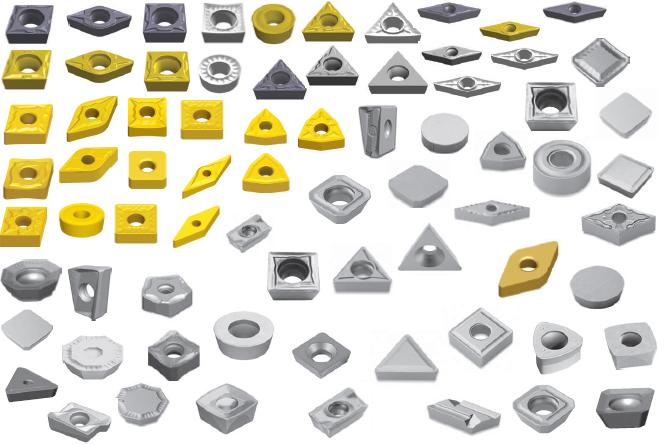
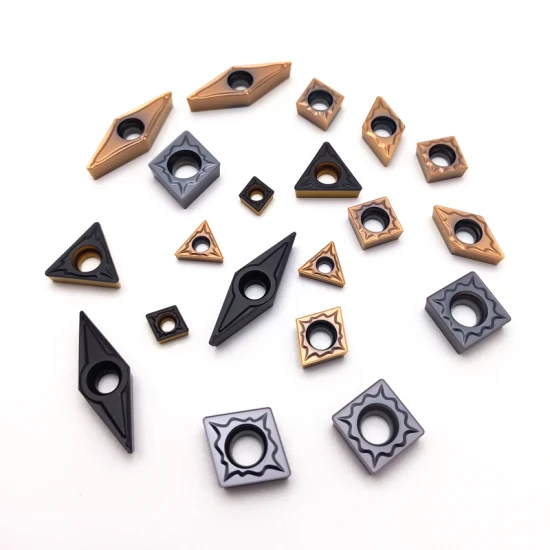
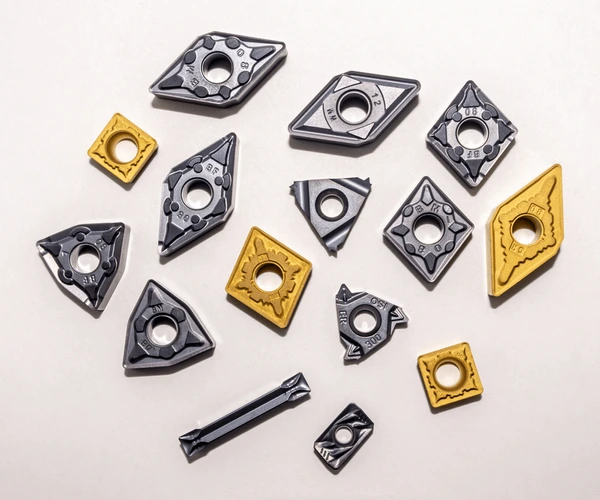

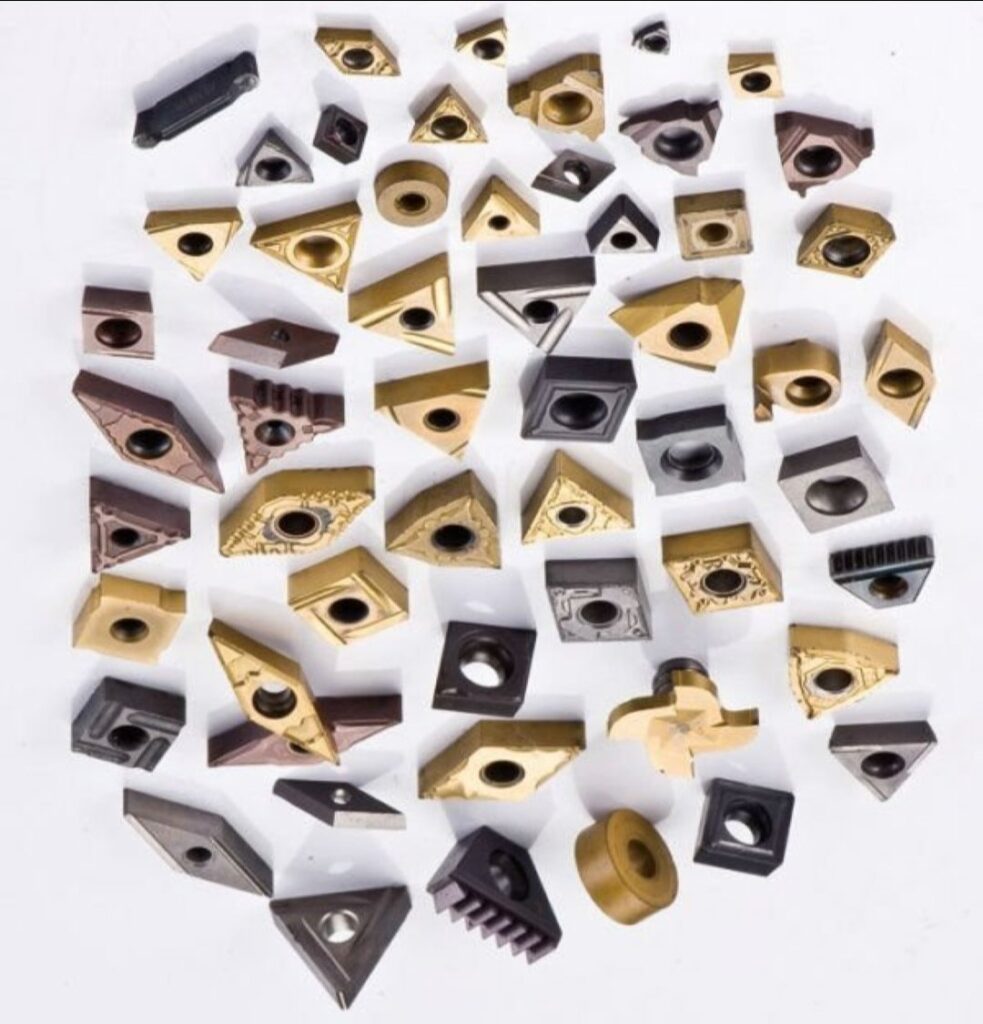
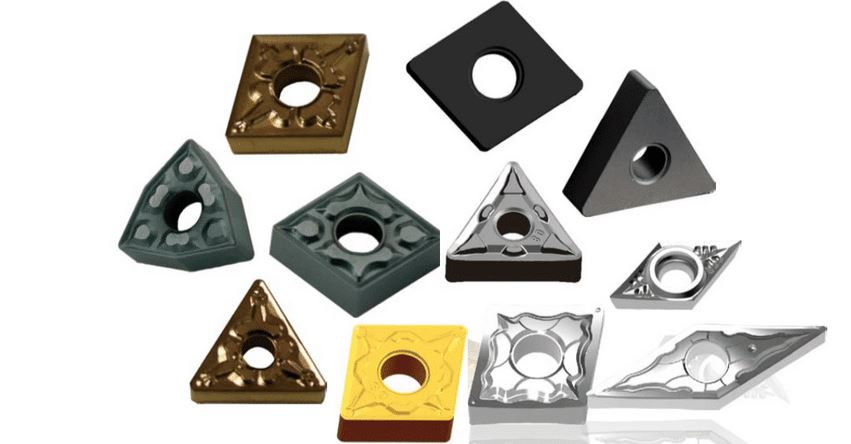
Spécifications, tailles, formes et normes
Les spécifications des plaquettes en carbure monobloc peuvent varier considérablement. Voici un tableau détaillé pour vous guider :
| Spécifications | Taille | Forme | Standard |
|---|---|---|---|
| Inserts ISO | Divers | Divers | ISO 1832 |
| Inserts ANSI | Divers | Divers | ANSI B212 |
| Inserts DIN | Divers | Divers | DIN 4987 |
| Inserts JIS | Divers | Divers | JIS B 4130 |
Fournisseurs et détails des prix
Lorsqu'il s'agit d'acheter plaquettes en carbure monoblocLa connaissance des fournisseurs et des prix peut vous aider à prendre une décision éclairée. Voici un tableau détaillé :
| Fournisseur | Localisation | Fourchette de prix | Notes |
|---|---|---|---|
| Sandvik Coromant | Mondial | $10-$50 par insert | Haute qualité |
| Kennametal | Mondial | $15-$60 par insert | Durable |
| Matériaux Mitsubishi | Mondial | $12-$55 par insert | Fiable |
| Outils Seco | Mondial | $10-$50 par insert | Polyvalent |
| Walter AG | Mondial | $14-$58 par insert | Précision |
Sélection des plaquettes en carbure monobloc appropriées
Le choix de la plaquette carbure appropriée peut s'avérer délicat. Voici un tableau pour vous aider à faire le meilleur choix :
| Critères | Considérations | Inserts recommandés |
|---|---|---|
| Matériau Dureté | Les matériaux plus durs nécessitent des inserts plus résistants | CNMG, TNMG |
| Finition de la surface | Pour les finitions fines, utiliser des plaquettes avec des angles de coupe positifs. | VNMG, DCMT |
| Vitesse de coupe | Les opérations à grande vitesse nécessitent des plaquettes à haute résistance à l'usure | CNMG, SNMG |
| Type de machine | Assurer la compatibilité avec votre machine-outil | CCMT, TCMT |
| Application | Des tâches spécifiques requièrent des formes d'insertion spécifiques | DNMG, WNMG |
Avantages et limites des plaquettes en carbure monobloc
Les plaquettes en carbure monobloc ont leurs avantages et leurs inconvénients. Voici un tableau comparatif :
| Aspect | Avantages | Limites |
|---|---|---|
| Dureté | Excellente résistance à l'usure | Fragile, susceptible de s'écailler |
| Température | Haute stabilité thermique | Peut être coûteux |
| Polyvalence | Convient à divers matériaux | Nécessite une manipulation précise |
| Durée de vie | Longue durée de vie par rapport aux HSS | Le coût initial est plus élevé |

FAQ
Quels sont les plaquettes en carbure monobloc en composition ?
Les plaquettes en carbure monobloc sont principalement composées de carbure de tungstène, de cobalt et parfois d'autres carbures comme le titane, le tantale ou le niobium.
Comment choisir la bonne plaquette carbure ?
Prenez en compte des facteurs tels que le matériau à découper, l'état de surface requis, la vitesse de coupe et le type de machine. Consultez notre tableau de sélection pour obtenir des conseils détaillés.
Pourquoi les plaquettes en carbure sont-elles si chères ?
Le coût élevé est dû aux matériaux utilisés (comme le tungstène et le cobalt) et aux processus de fabrication de précision.
Les plaquettes en carbure peuvent-elles être réutilisées ?
Oui, les plaquettes en carbure peuvent souvent être indexées (tournées) pour utiliser plusieurs arêtes de coupe avant de devoir être remplacées.
Quelles sont les formes courantes des plaquettes en carbure ?
Les formes les plus courantes sont le carré, le triangle, le rhomboïde, le diamant et le V, chacune étant adaptée à des applications spécifiques.
Comment les plaquettes en carbure améliorent-elles l'efficacité de l'usinage ?
Ils permettent des coupes précises et nettes, résistent à des températures élevées et ont une durée de vie plus longue, ce qui réduit les temps d'arrêt et augmente la productivité.
Conclusion
Les plaquettes en carbure monobloc sont une pierre angulaire de l'usinage moderne, offrant une durabilité, une précision et une polyvalence inégalées. De leur composition à leurs applications dans diverses industries, la compréhension de ces outils peut avoir un impact significatif sur vos processus d'usinage. Avec une sélection et une application appropriées, les plaquettes en carbure peuvent améliorer l'efficacité, réduire les coûts et améliorer la qualité des produits. Ainsi, la prochaine fois que vous vous préparerez pour un projet, n'oubliez pas le petit outil qui a une grande force de frappe : la plaquette en carbure monobloc.




